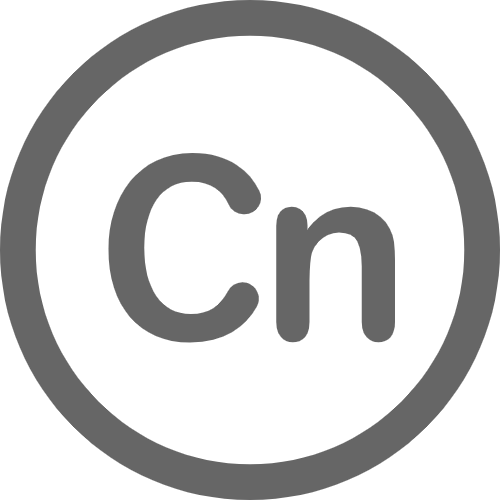Wang Yuguang Lab
My lab is dedicated to pioneering innovative strategies for oral and craniomaxillofacial tissue regeneration by integrating advanced optical technologies, smart nanomaterials, and intelligent medical devices. We employ interdisciplinary approaches spanning photobiology, bioengineering, and immunology to address critical challenges in infected and inflammatory microenvironments, aiming to translate fundamental discoveries into clinically viable solutions.
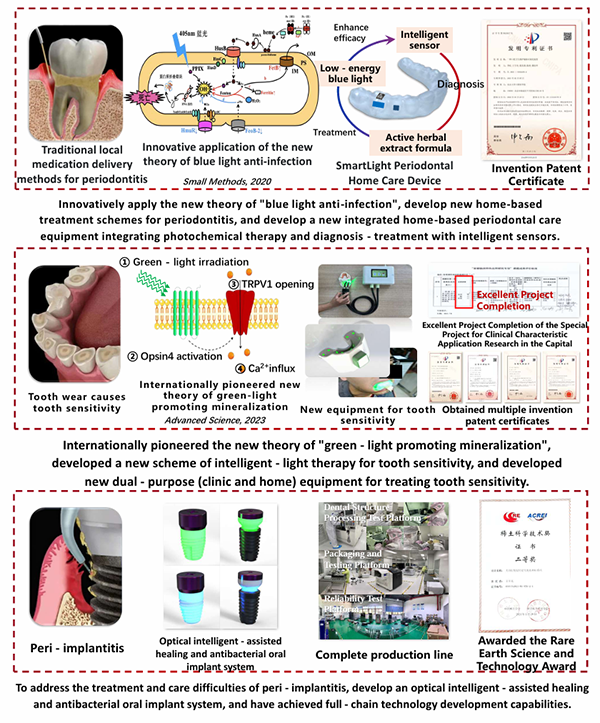
Our first major research thrust focuses on light-based modulation of tissue regeneration and antimicrobial therapy. By unraveling the molecular mechanisms of low-energy lasers (e.g., green and blue light) in regulating stem cell differentiation and bacterial metabolism, we develop non-invasive phototherapeutic strategies. For instance, we pioneered "green-light mineralization therapy" to enhance bone regeneration and "blue-light targeted antimicrobial protocols" to combat drug-resistant infections, offering alternatives to conventional pharmacological interventions.
The second major research thrust centers on designing microenvironment-responsive nanoplatforms to synergize antibacterial, immunomodulatory, and regenerative functions. We engineer smart nanomaterials capable of dynamically adapting to pathological conditions—such as infection-triggered charge reversal nanoparticles for precision antimicrobial delivery and immune-switching scaffolds to balance inflammatory responses during tissue repair. These innovations aim to overcome the limitations of traditional biomaterials in balancing efficacy and biocompatibility.
The third major research thrust targets translational optical medical devices for personalized and intelligent diagnosis. We develop intelligent phototherapy systems integrated with real-time monitoring and adaptive control modules, enabling precise management of dental implants and craniofacial defects. By advancing core technologies like miniaturized laser modules and domestically manufactured optical components, we strive to reduce reliance on imported medical devices and address unmet clinical needs in oral rehabilitation.
DIRECTOR
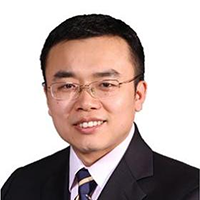
Yuguang Wang
Distinguished "Chang Jiang Scholar" Professor
Principal Investigator
yuguangwang@bjmu.edu.cn
Professor Wang Yuguang, ""Chang Jiang Scholar" Distinguished Professor, is a Chief Physician and PhD Supervisor at Peking University School of Stomatology. He earned his PhD from Peking University Health Science Center and was a visiting scholar at Harvard University and Massachusetts General Hospital. His research focuses on the interdisciplinary and translational applications of dental materials, as well as the integration of materials and chemistry in oral and biomedical sciences. He currently serves as a young committee member for both the Laser and Computer Committees of the Chinese Stomatological Association and as the vice-chair of the Smart Healthcare Branch of the Chinese Society for Stereology. He has received numerous awards, including the "Top Young Talent" honor under the Ten Thousand Talent Program and the 2023 Rare Earth Science and Technology Award.
RESEARCH AREAS
Biological Effects of Low-energy Lasers and Antibacterial Mechanisms
This research focuses on the regulatory mechanisms by which low-energy lasers (green and blue light) with specific wavelengths influence the regeneration of oral and maxillofacial tissues. Addressing challenges such as prolonged bone regeneration cycles and the susceptibility to secondary infections in an infection- and inflammation-rich microenvironment, the study systematically explores the molecular mechanisms by which green light activates light-sensitive receptors and calcium ion signaling pathways to promote osteogenic differentiation of stem cells. A novel "green light mineralization therapy" is proposed, significantly accelerating bone defect repair. Additionally, the study reveals how blue light induces selective bacterial lysis by disrupting the iron metabolism pathway of pathogens, providing a theoretical foundation for antibiotic-free infection control. These findings have been translated into clinical treatments that enhance bone regeneration efficiency and reduce infection risks.
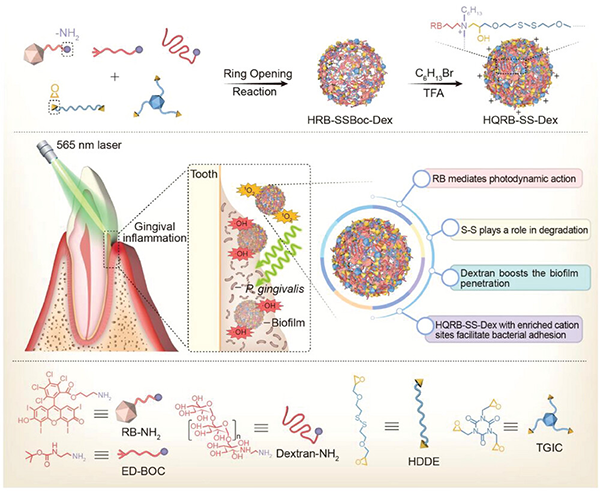
Intelligent Light-responsive Nanomaterials and Regulation of Pathological Microenvironments
This research focuses on the dynamic changes in infection, inflammation, and immune microenvironments during bone regeneration and designs photosensitive nanomaterials responsive to these pathological conditions. By developing an "immune modulation" model, the study achieves precise regulation of pro-inflammatory environments during the early stages and anti-inflammatory environments during the later stages of bone regeneration, optimizing immune cell behavior to accelerate tissue repair. The innovation of "charge-reversal" nanostructures allows the materials to remain inert in normal tissues, while efficiently activating antibacterial functions at infection sites, overcoming the activity-safety tradeoff typically encountered with traditional antibacterial materials. This approach offers an integrated solution of "antibacterial-immunoregulation-regeneration" for bone regeneration in complex pathological conditions.
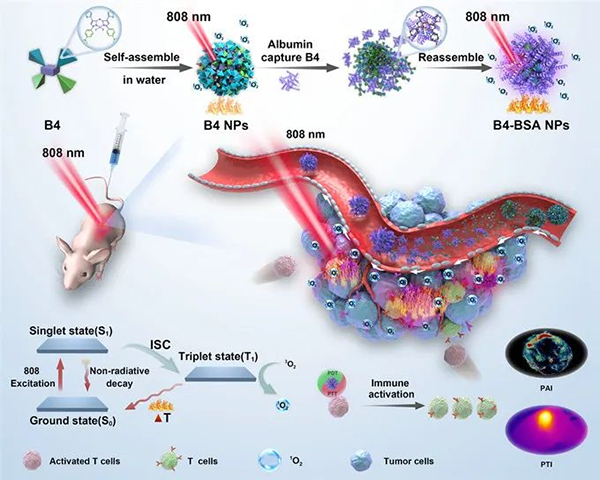
Development and Clinical Translation of Optical Medical Devices
Building on the research of low-energy laser theory and intelligent nanomaterials, this project develops functional optical medical devices tailored for oral and maxillofacial treatments. The focus is on overcoming challenges in implant-related infection control and dynamic immune microenvironment monitoring, with the creation of a phototherapy implant system that integrates light source control, real-time feedback, and personalized treatment functions, enabling intelligent management throughout the full lifecycle of dental implants. By establishing a domestic production line and localizing core technologies, this research supports the clinical translation of critical medical devices, addressing the key challenge of high-end medical equipment supply and enhancing China's independent innovation capacity in dental medical devices.
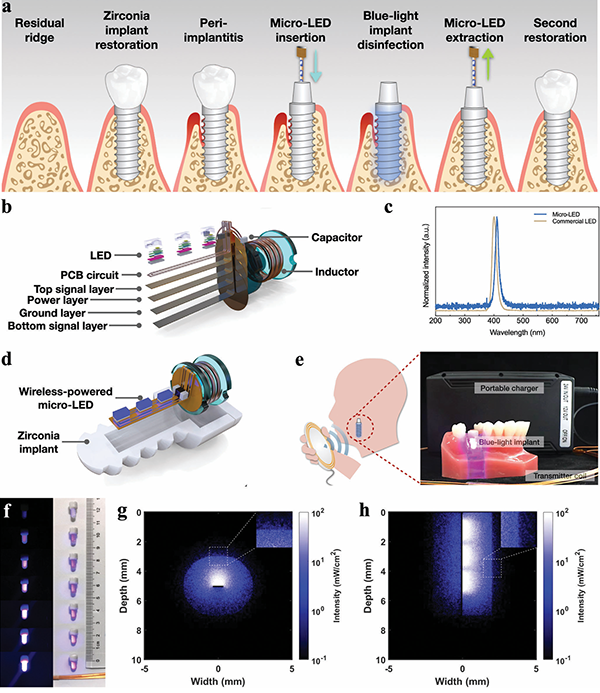
RECENT PUBLICATIONS
High-Throughput Screening and General Synthesis Strategy of Single-Atom Nanozymes for Oral Squamous Cell Carcinoma Therapy
ADVANCED MATERIALS, 2025
Anisotropic Hollow Structure with Chemotaxis Enabling Intratumoral Autonomic Therapy
ANGEWANDTE CHEMIE-INTERNATIONAL EDITION, 2025
Atomic engineering of single-atom nanozymes for biomedical applications
ADVANCED MATERIALS, 2024
Anisotropic Hollow Structure with Chemotaxis Enabling Intratumoral Autonomic Therapy
ANGEWANDTE CHEMIE INTERNATIONAL EDITION, 2024
Highly Conjugated Nanozyme with Non Coordination Saturation for Cascaded Enhanced POD Reaction Driving Antibacterial Therapy
ADVANCED FUNCTIONAL MATERIALS, 2024
Oxygen-Free Polycationic Photosensitizers for Treatment of Periodontal Inflammation
ADVANCED FUNCTIONAL MATERIALS, 2024
Thermophoretic glycan profiling of extracellular vesicles for triple-negative breast cancer management
NATURE COMMUNICATIONS, 2024
Tuning oxidant and antioxidant activities of ceria by anchoring copper single-site for antibacterial application
NATURE COMMUNICATIONS, 2024
Stimuli-responsive graphdiyne-silver nanozymes for catalytic ion therapy of dental caries through targeted biofilms removal and remineralization
NANO TODAY, 2024
Lubricating Microneedles System with Multistage Sustained Drug Delivery for the Treatment of Osteoarthritis
SMALL, 2024
Spatial Position Regulation of Cu Single Atom Site Realizes Efficient Nanozyme Photocatalytic Bactericidal Activity
ADVANCED MATERIALS, 2023
Gadolinium (III)-Chelated Deformable Mesoporous Organosilica Nanoparticles as Magnetic Resonance Imaging Contrast Agent
ADVANCED MATERIALS, 2023
A magnetic cloud bomb for effective biofilm eradication
ADVANCED FUNCTIONAL MATERIALS, 2023
Advanced and readily-available wireless-powered blue-light-implant for non-invasive peri-implant disinfection
ADVANCED SCIENCE, 2023
Delivery of Neutrophil Membrane Encapsulated Non-Steroidal Anti-Inflammatory Drugs by Degradable Biopolymer Microneedle Patch for Rheumatoid Arthritis Therapy
NANO TODAY, 2023
A facile, protein-derived supramolecular theranostic strategy for multimodal-imaging-guided photodynamic and photothermal immunotherapy in vivo
ADVANCED MATERIALS, 2022
A Solid-liquid Composite Lubricating "Nano-snowboard" for Long-acting Treatment of Osteoarthritis
ADVANCED FUNCTIONAL MATERIALS, 2022
Self-assembled nanospheres mediate phototherapy and deliver CpG oligodeoxynucleotides to enhance cancer immunotherapy of breast cancer and melanoma
NANO TODAY, 2022
Biofilm-Sensitive Photodynamic Nanoparticles for Enhanced Penetration and Antibacterial Efficiency
ADVANCED FUNCTIONAL MATERIALS, 2021
Antimicrobial blue light inactivation of pathogenic microbes: State of the art
DRUG RESISTANCE UPDATES, 2017
CONTACT
Yuguang Wang
wangyuguang@bjmu.edu.cn
Peking University School and Hospital of Stomatology,
No.22 Zhongguancun South Avenue,
Haidian District, Beijing 100081, PR China
last text: Shuguo Zheng Lab (Preventive Dentistry)
next text: Department of Oral Medicine



